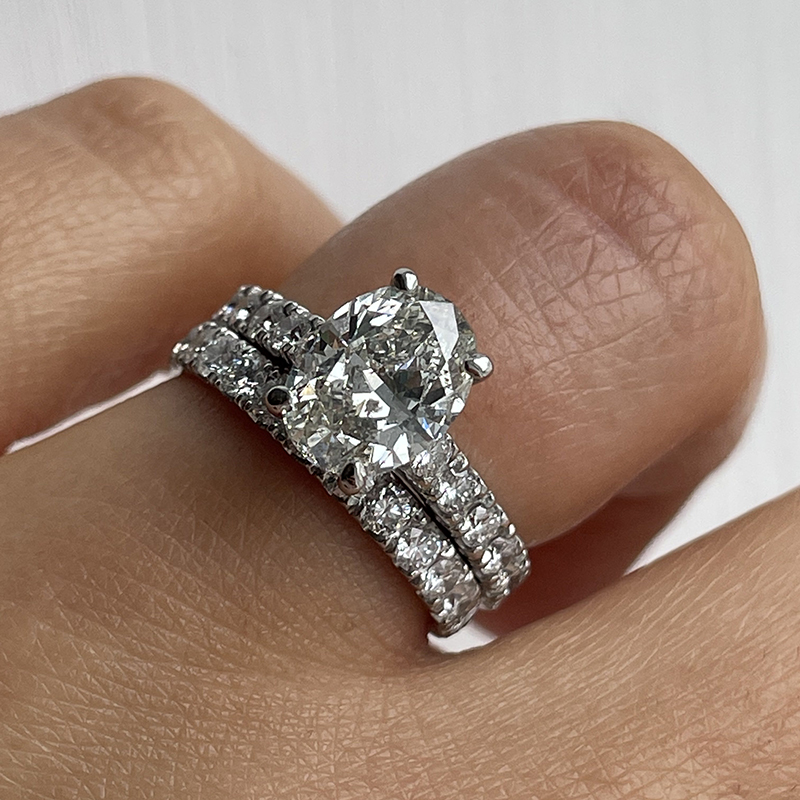4Cs lab diamonds, often referred to as synthetic or man-made diamonds, have gained significant popularity in recent years. These stones are chemically, physically, and optically identical to natural diamonds, but they are created in controlled environments using advanced technological processes. One essential aspect of understanding both lab-grown and natural diamonds is the 4Cs: Carat, Cut, Color, and Clarity. Here’s an in-depth look at each of these criteria as they pertain to lab diamonds.
Carat
The carat weight of a diamond refers to its size and mass, with one carat equaling 200 milligrams. When considering lab-grown diamonds, carat weight is an important factor for buyers, as it directly influences both the price and appearance of the stone.
Lab-grown diamonds typically cost 20-40% less than their mined counterparts, allowing consumers to purchase larger stones within their budget. Moreover, since lab diamonds can be produced in various sizes without the limitations of natural mining, consumers have a wider selection when choosing carat weights.
Cut
The cut of a diamond is crucial because it determines how well the stone reflects light, impacting its overall brilliance and sparkle. The cut is influenced by the diamond’s proportions, symmetry, and polish.
Lab diamonds are often cut with precision to maximize their visual appeal, and many retailers offer grading based on the same standards used for natural diamonds, including Excellent, Very Good, Good, Fair, and Poor. One of the advantages of lab-grown diamonds is the opportunity for customization, allowing buyers to select cuts that match their individual preferences, whether they prefer a classic round brilliant or a unique fancy shape.
Color
The color of a diamond refers to the presence of any hue that can affect its appearance. The diamond industry grades color on a scale from D (colorless) to Z (light yellow or brown).
Lab-grown diamonds are available in a wide range of colors, with many stones exhibiting higher quality (D, E, or F) due to the controlled conditions in which they are created. Additionally, lab diamonds can be produced in fancy colors, such as blue, pink, and yellow, providing buyers with unique options that are less commonly found in natural diamonds.
Clarity
Clarity refers to the presence of internal or external imperfections, known as inclusions and blemishes. The clarity scale ranges from Flawless (no inclusions visible under 10x magnification) to Included (inclusions visible to the naked eye).
Lab diamonds generally exhibit fewer inclusions because of the controlled environment in which they are produced. As a result, many lab-grown diamonds are rated as VS (Very Slightly Included) or higher. Reputable lab-grown diamonds are graded by gemological laboratories, such as GIA or IGI, ensuring that buyers can trust the clarity ratings provided.
The Benefits of Lab-Grown Diamonds
Lab-grown diamonds offer several advantages, including ethical sourcing. They are free from the ethical concerns associated with mined diamonds, such as conflict diamonds and labor exploitation. Furthermore, while diamond mining can have significant environmental consequences, lab-grown diamonds present a more sustainable option with a reduced carbon footprint.
Additionally, the affordability of man made diamonds allows consumers to obtain a larger or higher-quality stone for the same budget they might allocate for a natural diamond.
Conclusion
In summary, understanding the 4Cs—Carat, Cut, Color, and Clarity—is essential for anyone considering the purchase of a lab-grown diamond. With their ethical advantages, environmental benefits, and cost-effectiveness, lab-grown diamonds are an appealing choice for modern consumers looking for beautiful and meaningful jewelry.

